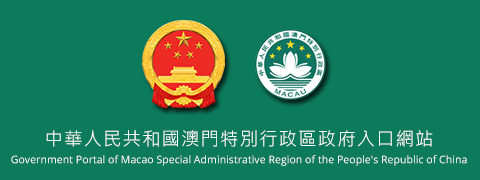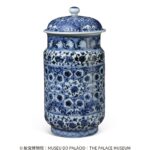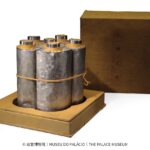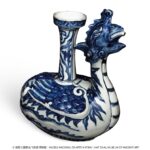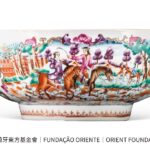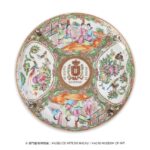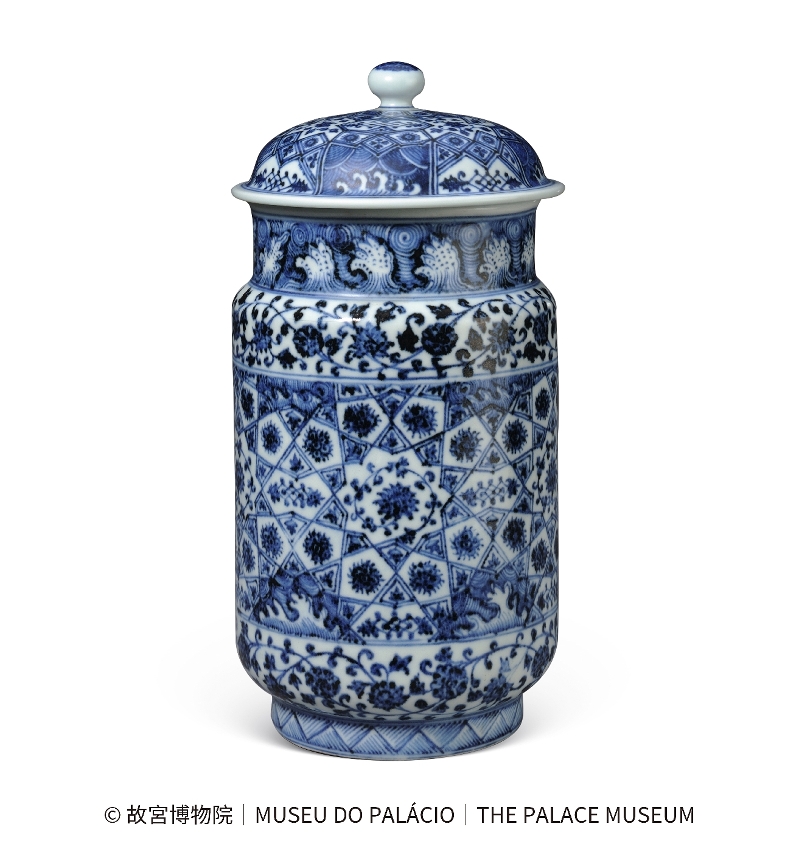 Collection of The Palace Museum (Blue-and-white lidded jar featuring a brocade pattern)
Collection of The Palace Museum (Blue-and-white lidded jar featuring a brocade pattern)
Jointly organised by the Cultural Affairs Bureau of the Macao SAR Government and the Palace Museum, co-organised by the National Museum of Ancient Art, the Orient Foundation and the Ajuda Library, and implemented by the Macao Museum of Art (MAM), the exhibition “Reflections of Maritime Connections: 16th-19th Century Sino-Portuguese Cultural Exchange” will be inaugurated on 7 November 2025 at 6:30pm on the 4th floor of the MAM. Divided into three sections including “Dawn of the Porcelain Road”, “Cultural Exchange in Porcelain” and “Dialogues between Courts”, the exhibition features a selection of 177 precious items/sets from the aforementioned participating institutions, systematically showcasing the profound trade and cultural ties established between China and Portugal through the Maritime Silk Road during the 16th to 19th centuries. It also highlights the amicable exchanges between the Qing court and the Portuguese royal family, as well as the important role of Macao as a bridge in the Sino-Portuguese exchanges.
The exhibition brings together the precious collections from cultural institutions in China and Portugal. The exhibition is themed “Reflections of Maritime Exchange”, which symbolises how the Maritime Silk Road not only left a rich legacy of material culture, but also reflects the brilliance of mutual learning between civilisations through Macao as a “window of civilisation”. Notable collection highlights include the Blue-and-white lidded jar featuring a brocade pattern from the Yongle Emperor’s reign of the Ming Dynasty (Collection of The Palace Museum) and the Porcelain kendi with underglaze blue painted decoration in phoenix from the Ming Dynasty (Collection of the National Museum of Ancient Art), which are particularly unique and exemplify a beautiful blend of Chinese and Western cultural elements. Other exceptional artefacts includeporcelains with Portuguese coats of armsfrom the Museum of the Orient under the auspice of the Orient Foundation, rare illustrated document from the “Great Yellow Roll” (Imperial Edict) preserved at the Ajuda Library, and exported porcelain shards unearthed in Macao. All of which possess immense historical and artistic value, guiding visitors to transcend the time and space across four centuries, while allowing them to experience tangible artefacts and spiritual essence of Sino-Portuguese cultural fusion.
In order to further explore the historical context behind these artefacts, a series of activities will be held during the exhibition period. On 8 November at 3pm, Rafael Alfenim, a ceramics expert from the National Museum of Ancient Art, will host a lecture in Portuguese titled “Paths of Blue: The Influence of Chinese Porcelain on Portuguese Ceramics from the 16th Century Onwards”, with simultaneous interpretation available in Mandarin. From 15 to 23 November, the “Guangcai Porcelain Painting Workshop” and “Youth Printmaking Workshop” will be held for Friends of MAM, allowing participants to engage in hands-on creation and experience the beauty of traditional craftsmanship. Registration for the above activities is now open. Interested parties can register through the “Activity Applications” of the Macao One Account (activity.mo.gov.mo/activity-h5/). Selection will be made by drawing lots.
In addition, the Macao Chinese Orchestra will perform on 9 November and 21 December at 4pm in the exhibition hall, interpreting the beauty of Sino-Portuguese cultural exchange through music. The exhibition “Reflections of Maritime Connections: 16th-19th Century Sino-Portuguese Cultural Exchange” will be held until 8 March 2026. From 15 November onwards, guided tours in Cantonese will be available on Saturdays, Sundays and public holidays. Group bookings are also welcome. The MAM is open daily from 10am to 7pm (last admission at 6:30pm), including on public holidays and is closed on Mondays. Admission is free.
For more information about the exhibition and activities, please visit the MAM’s website at www.MAM.gov.mo and the “Macao Museum of Art” page on Facebook.
